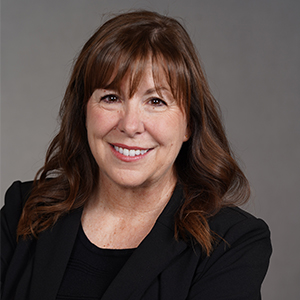Editor in Chief Sarah Wheeler sat down with Kirill Klokov, CEO at Truv, to talk about the advantages of consumer-permissioned data for data quality and security. This interview has been edited for length and clarity.
Sarah Wheeler: How did you get into the verification space?
Kirill Klokov: It was through experiencing how verifications can be broken myself. I’m an immigrant, so when I came here to study and graduated from business school, I got a good job. But I didn’t have much of a credit score, so right after graduation, I applied for a loan to get a car and build my credit. And I got rejected by every single bank I applied with, including the credit union I bank with. They actually didn’t know what to do with me, because I didn’t fit into any of the credit boxes. So, I thought: this is a real opportunity.
Now, almost 10 years later, there’s plenty of fintech, but we’re still just scratching the surface: there are 60 million people who cannot actually get anything other than a payday loan. That’s ridiculous. When you need to verify income for people who don’t have a credit score or they have a thin file — that’s when you need to understand the customers’ ability to pay. And you need to do the same thing in huge transactions like mortgage.
SW: The mortgage space has its own very particular kinds of challenges, especially from a regulatory standpoint. What did you find?
KK: What I learned is: you’ve got to respect the complexity and understand that this is an ecosystem of its own. And mortgage lenders like talking to mortgage lenders, and it’s a whole community of people that once you embed yourself and you’re willing to learn, it’s pretty amazing.
SW: Freddie Mac just approved Truv for payroll verifications and consumer-permissioned income verification. What does that mean for your business?
KK: It’s just the beginning of us being able to tackle some of the pain points that the mortgage lenders are having in this country. If you look at just the last 12 months, you got a 400% increase from FICO, you got an increase from Equifax and the credit bureaus and then you got hit by The Work Number increase again.
Lenders are going through a tough time and some companies are taking advantage of whatever they have left in this market. I think this is a great opportunity for us and for the GSEs to level the playing field and allow new vendors to join so that we can give discounts. And if you’re writing the ROI analysis on us versus say The Work Number, you can save up to 70% of the total cost of The Work Number expenses.
SW: One of your differentiators is consumer-permissioned data and making it easier on the consumer. What does that look like?
KK: Imagine you use nCino or SimpleNexus as a POS, you will open the app and there will be a pop-up which would ask who your employer is. Then we know from our historical data which payroll provider that employer uses, say it’s ADP. The consumer logs in with their ADP credentials and then we’ll authenticate, extract the data and return back to the mortgage lender. It’s a fairly straightforward process.
In comparison, the instant databases like The Work Number go provider by provider and sign exclusive agreements. So, if you wanted to build the next The Work Number, you just can’t because it’s very expensive. And if anybody thinks that there will be another provider who will come around and sell Work Number data for $5, or whatever their prices were before the 2020 spikes, it’s not happening because they completely locked up the market. So the alternative is to access the data in partnership with the borrower. And that’s a more innovative way to access the data — without the middleman.
SW: How does this affect the borrower directly?
KK: When somebody increases prices, they will try to pass along that cost. When I bought a home last time, I got a $350 charge from The Work Number for my loan. And the more prices are increased for credit pulls and for income verification, the more those costs will end up on the closing statement. As a borrower myself, I find it find kind of funny that somebody took my data, put that in their own database without my permission, then charged the lender for my data, and then the lender passed along those costs to me. So I effectively pay for my own employment verification. Same with credit and with any third-party database. For me it’s just mind-boggling.
SW: How do you think about security?
KK: Let’s look at what can go wrong step by step. If I ask you to send me pay stubs, what happens if my email gets hacked or you send it to the wrong email? On your pay stub you have your social security number, which is like your whole life. And who knows how that email is getting shared around within a big bank or a big IMB? Because email is not that secure in the first place. Then on the other hand, we know that in 2018, somebody got access to the whole Equifax database. It was mostly credit data, but who knows if it’s going to happen to the income database. As far as storing the data inside a database, it’s always insecure, because there’s just one point of failure — somebody gets access to those production keys and the whole database is gone.
We’re doing it differently. We are getting one-time access with the consumer’s permission. We hardly ever store the credentials and if we do, we actually store them in a secure, encrypted format. So even if you could steal the whole database, you will just see a bunch of ones and zeros, which doesn’t really help the hackers. Compared to sending emails to your bank, it’s way more secure.
I would argue that compared to before and after Truv, we’re actually making the whole industry much more secure and consumers’ data is now safer. I’m not even talking about fraud. The potential for fraud is gone, because we read the data directly from the data source.
What is important about this is that lenders can trust this data so they can actually process a file much faster. And I think that’s how lenders should be thinking about the time to decision: the higher quality the data and the more reliable the source is, the faster you should process those applications, while you should really give a closer look to those applications that sent you blurry Photoshopped pay stubs.
SW: How do you think about what to do next from a tech standpoint?
KK: It’s simple: You just need to listen to your customers and for B2B, you need to be the biggest customer advocate. Probably 40% of my time during the week I spend with customers. And I try to listen and understand what what’s missing. Right now, we’re selling sort of a point solution — it’s just the payroll and its certification just from Freddie. But ideally, I could sell you a 100% solution to your problem, which is verification of income and employment, assets and insurance. If I could sell you a 100% solution, then you can buy it from one platform, one vendor and kind of forget about this problem.
The Northstar that I keep telling my team: nobody wants your product, everybody wants a solution to their problem. And the more you use your product to solve their problem, the more you’re going to be successful as a business. Our No. 1 value is customer obsession. You can get everything else wrong, but if you build what customers want, you’ll be good as a business.
SW: What keeps you up at night?
KK: I always think about the vision gap: the gap between what I want to have and what we have today. How do I bridge that gap? I know where we’re going, I know how we should look. But then we have the reality of how we work today. And I think finding this kind of perfect balance between getting as fast as we can to the vision but also executing on the promise of what we give to our customers today is really challenging.
SW: What makes you different from a tech perspective?
KK: Alignment around like the customer. Darshana Shetty just won your Tech Trendsetters award. She’s our head of product and she got that award because she actually is the biggest customer advocate. And our engineering team will always be asking, how is this customer using that? And I think this philosophy that we’re here to solve customer problems makes us different. Everything else is like the tech stack. You can copy code, you can ride with ChatGPT these days. I think what makes a big difference are the cultural values around what we want to build as a business and how much we’re willing to focus on the execution and actually delivering on the promise.
SW: What makes you optimistic about 2024?
KK: Everybody is struggling today with the price increases, the volumes. That also means that everybody has a bit more room to think about how do you rebuild your tech stack today? I’m excited because this is the best time to be Truv because we provide substantial savings, we do solve 100% of your problem. I hope lenders spend some time thinking about how do they change things so they don’t have to hire the same big team and then let them go if there’s another downturn. About how they build something that makes their core employees five times more productive than they were in 2020.







Kirill — I love your point on respecting the complexity of the ecosystem. There’s a lot of tools and processes to be fixed or improved (and costs to be squeezed out) in mortgage, but the process and systems of today exist for a reason. And a lot of smart people have worked to build the ecosystem that we currently operate in. It feels like there’s been a mindset shift in the digital mortgage innovation wave where technologists and innovators have learned to work within the system to make improvements over time vs. coming in as an outsider with a sledge hammer on day 1.
I like your approach!